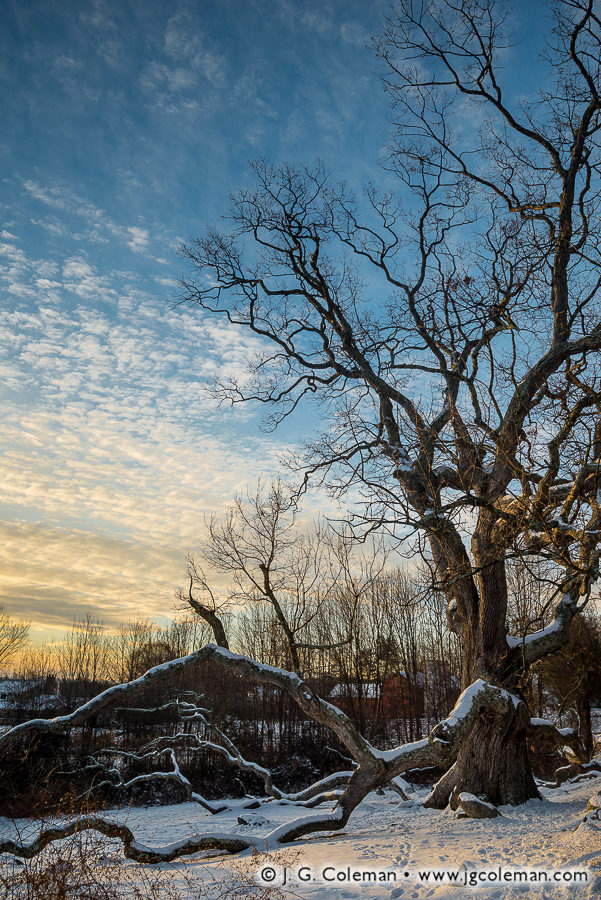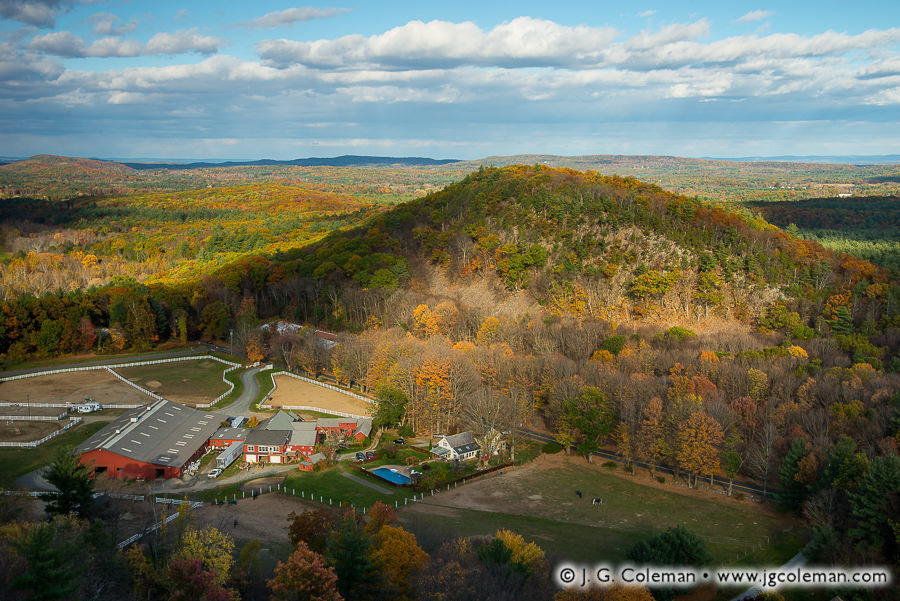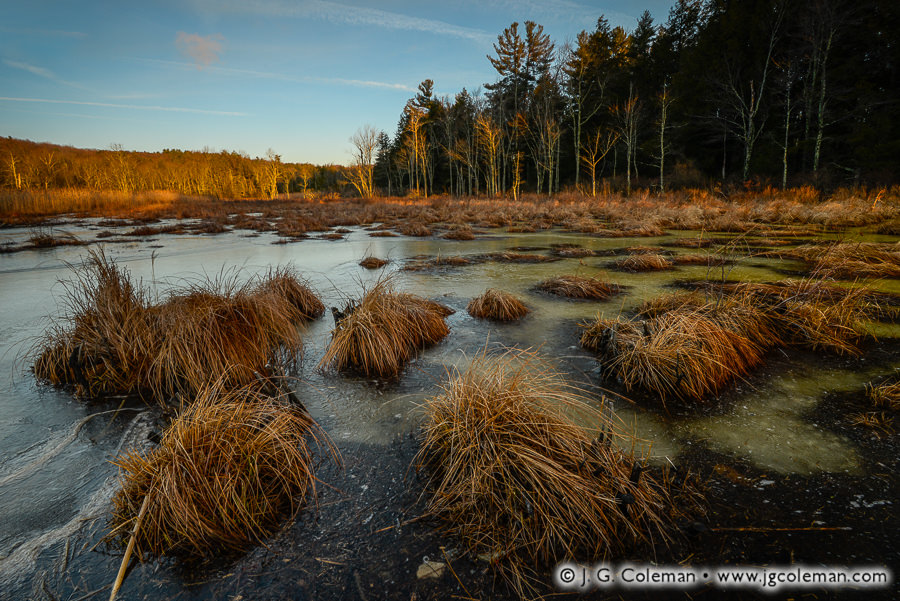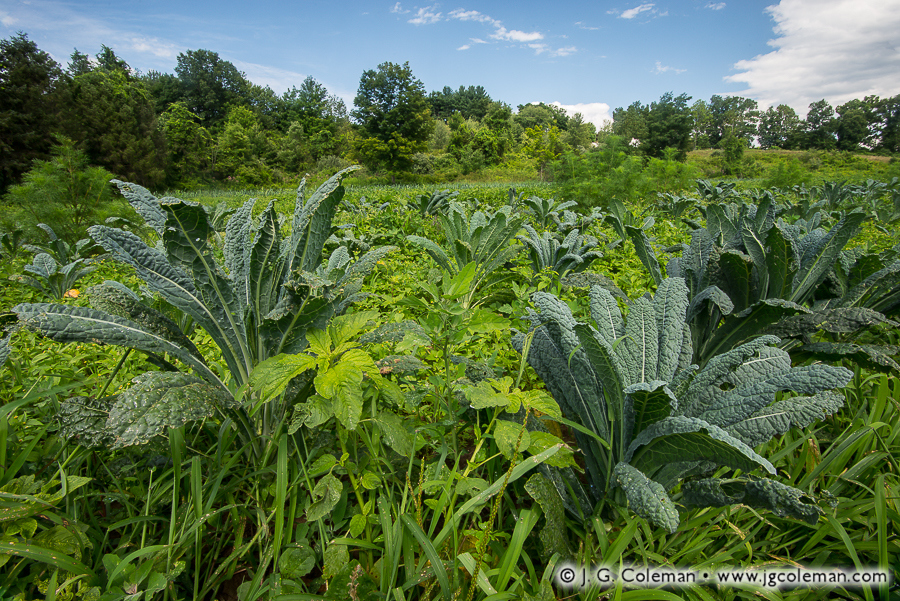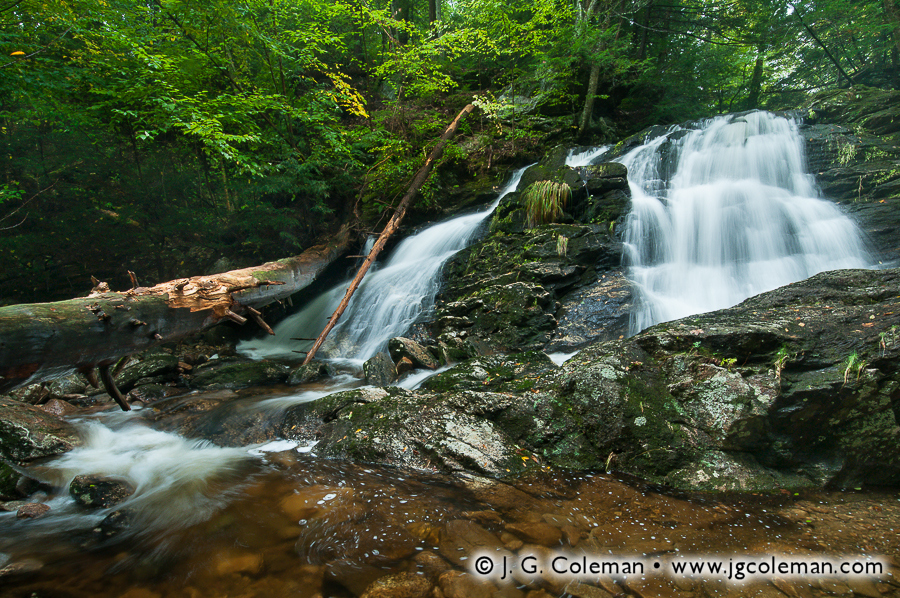
Granby Oak (aka The Dewey Oak and Day Street Oak)Granby, Connecticut
© 2017 J. G. Coleman
According to a 2015 report by the USDA, there’s somewhere in the realm of 806 million trees scattered throughout Connecticut’s forests. Of those, it’s probably safe to say that well over 99% of them are less than 200 years of age, if not significantly younger. Indeed, old-growth forest in the Nutmeg State is exceptionally scarce, limited to a few parcels of oftentimes rough terrain where trees have somehow managed to dodge forest fires, disease, tornadoes and the mighty ax for hundreds of years. But even those old-growth trees tend most often to be 250 to 350 years old. That brings me to the truly ancient white oak tree featured in my newly-released work: the venerable Granby Oak.
Estimated to be as much as 400 to 450 years old, the Granby Oak was likely a healthy sapling at about the time that the Pilgrims were first stepping foot on Cape Cod a hundred miles to the west in 1620. The quiet road in the hills that the tree stands beside today certainly didn’t exist yet. And for that matter, neither did the town of Granby or the Connecticut Colony. The vast and storied history that the Connecticut landscape has accrued since those earliest years before European settlement could fill volumes, and through it all, the Granby Oak has quietly minded its plot of soil… growing ever larger by the decade.

Granby Oak (aka The Dewey Oak and Day Street Oak)Granby, Connecticut
© 2018 J. G. Coleman
At the time of its last formal assessment, the Granby Oak’s trunk measured more than 20 feet in circumference. It’s grown to be a fairly squat tree, measuring a bit less than 80 feet tall, though this is probably because it sat amidst open farmland for a good deal of its mature years and simply didn’t need to race skywards in an effort to compete for sunlight, as one would expect in a forest environment. Instead of growing upward, the Granby Oak grew outward, its ancient gnarled branches eventually becoming so long and heavy that they came to rest upon the ground like wooden serpents.
Of course, the tree hasn’t exactly enjoyed an easy ride; at times, it’s been a struggle. There’s no doubt that the Granby Oak has endured several dozens of hurricanes and blizzards throughout its years, apparently no worse for the wear. Only in its advanced age does it seem to have weakened somewhat unto the rigors of time and happenstance. In 1997, the plot of land on which the tree stood was nearly sold for development as a home lot, only narrowly escaping that fate when locals thankfully rallied behind the Granby Land Trust to purchase the property instead and preserve the tree so long as it should go on living. But with one crisis averted, others were to follow. The Granby Oak was hit by a truck in 2010 and barely a year later it was mangled by a freak October snowstorm that mercilessly claimed a number of its branches. And yet, somehow, this sylvan relic of Connecticut’s North has managed to persist through it all.
But what lays ahead for the Granby Oak? If we are to consider the range of recorded ages for some of the oldest fallen white oaks in the Eastern United States, the Granby Oak would already seem to have cheated death out of as much as a century. In 2005, cross-dating of a remarkable white oak in Virginia revealed an age of 464 years, easily the most extraordinary specimen on record. And yet, if the Granby Oak’s estimated age is correct, then it’s quickly approaching even the most extreme known boundaries of longevity for the species. Truth be told, while the tree remains apparently healthy and hopefully endures for several more years to come, it seems quite unlikely that another century lays ahead. It stands today as an iconic and wondrous denizen of Connecticut, having outlived virtually all of the billions of trees that existed on the day it sprouted so very long ago. What a grand life it has lead! And going forward.. well… perhaps the conclusion of Connecticut writer Stephen Wood puts it best:
“It has certainly suffered mightily since I first visited. Major limbs have disappeared and others are not long for this world. Everything dies eventually, and when this tree suffers its final fate, we can’t be too sad.”
Purchase a Fine Art Print or Inquire About Licensing
Click here to visit my landing page for “Winter Primeval” to buy a beautiful fine art print or inquire about licensing this image.
Want to See More?
Be sure to check out more of my work from the Granby Oak.

